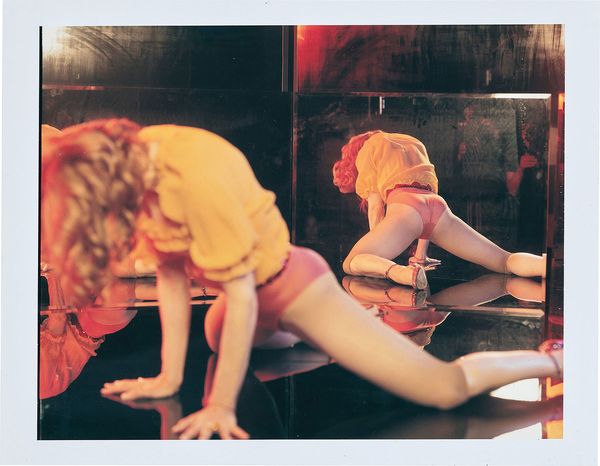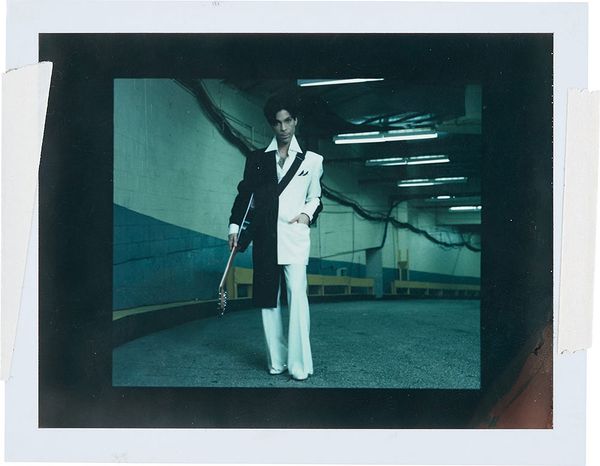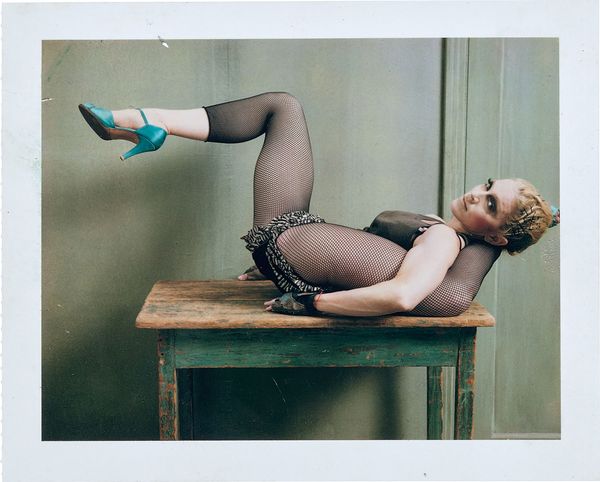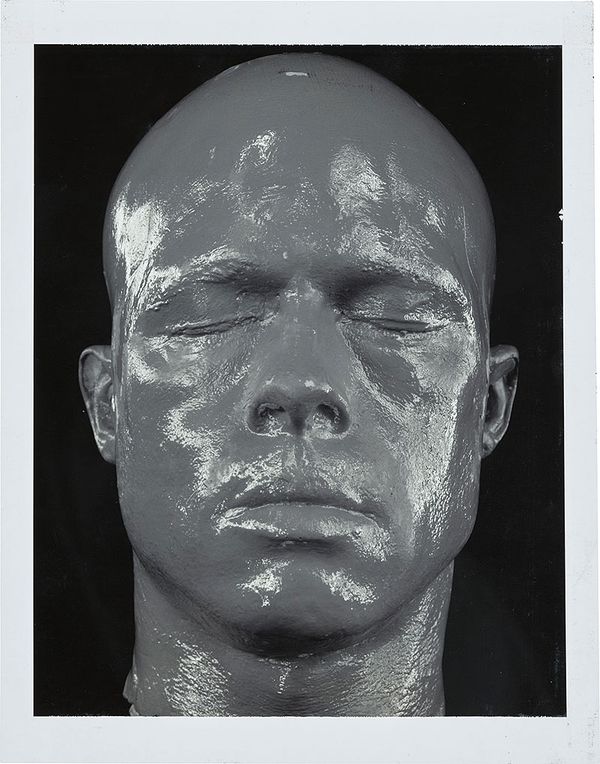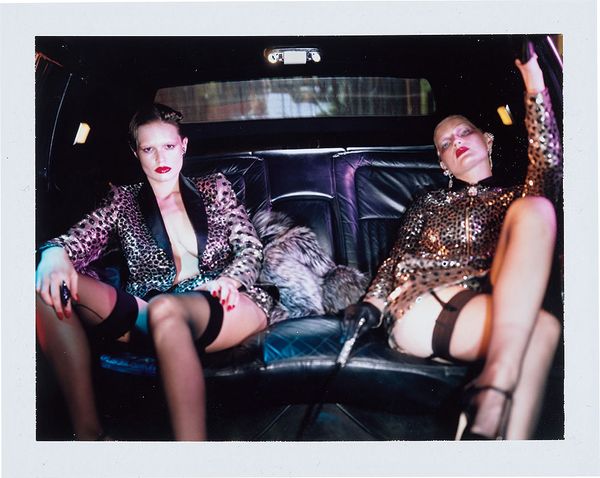Steven Klein, Madonna, Los Angeles, 11 August 2005. London Photographs Auction.
ULTIMATE STEVEN KLEIN showcases one of the most innovative and provocative artists working in photography and film today. Offered as a part of our London Photographs auction, this exclusive selection presents collectors unparalleled access to Klein’s distinctive vision that subverts our notions of glamour, fame, and beauty. The majority of the 24 works were created during editorial assignments for international publications such as W, American Vogue, Vogue Italia, L’Uomo Vogue and Interview. Each work demonstrates Klein's skill as a storyteller who creates epic narratives that transform our understanding of his subjects, including some of the biggest names in music, film and fashion: Madonna, Prince, David Bowie, Brad Pitt, Angelia Jolie, Kate Moss, Naomi Campbell and Alexander McQueen. Klein’s unique photographs not only provide an intimate and insightful glimpse into his creative process but also capture defining moments in pop-culture history.

Polaroids Then
Yuka Yamaji: Take us back to the beginning of your relationship with instant photography. What is your earliest memory?
Steven Klein: Growing up with family pictures and vacation pictures taken on an SX-70. Taking pictures, being able to see them and share them in a way that you could never do before because you would always have to send a roll of film out to be developed – it was the first way of sharing a picture with another person. And the idea of SX-70s being able to be developed outside in the sunlight was a magical experience as opposed to film having to be developed in the dark.
YY: When did you start taking Polaroids professionally and why?
SK: When I started doing jobs, I used it as a tool for pre-visualisation to check lighting, sets, wardrobe and also movement. It was an integral tool at that time that I think all photographers used, including myself, to preview a picture before you took it – it was a way to secure yourself. Because the thing is, if something was wrong, it would take a day or two to get the film back and then you’d have to reshoot.
Steven Klein, Prince, New York City, 12 July 2004. London Photographs Auction.
YY: All of the Polaroids in our selection were shot on peel-apart film. What was the reason behind that choice?
SK: My first Polaroid was a 4x5 that you could peel away and keep the negative to print from it. Each camera that I had – Hasselblad, Pentax, 35, 4x5 or 8x10 – used particular backs for peel-apart film and the result was a one-to-one image of what was seen through the lens. The great thing about it was that you could use the same camera for Polaroids and analogue film.
YY: The majority of your Polaroids on offer were created between 1998 and 2007 before you transitioned to digital photography, and you used three different formats of Polaroid prints: Type 100, 4x5 and 8x10. How was that experience?
SK: When people shoot with the same camera and the same lens, it’s like the same pair of eyes. For me, each one of those cameras have inherent types of eyes and it changes the way that the sitter reacts to you. For instance, if you have an 8x10 or a 4x5 camera, the sitter has more respect because the camera is bigger and they know they have to stand still for it in a certain way. Using these very cumbersome cameras outdoors is in fact much harder for both sitter and photographer. Each camera had its own Polaroid system and exploring these different cameras and formats worked for me for many years.
Steven Klein, Alexander McQueen, New York City, 6 September 2002. London Photographs Auction.
YY: So, if you were using a 4x5 with a Polaroid back for your test shots, you would then remove the back to shoot on film?
SK: Yes, but if I saw the picture right away, I would go right to film, and then do a Polaroid at the end to make sure I was satisfied with it. If you look at a lot of the images in our selection, you can see that the Polaroids are almost exact duplicates of the final outcome.
It was a way for me to get the sitter excited and to show them the story as we built it. They would sometimes have suggestions – it opened the conversation.
YY: And would you show the Polaroids to the sitter?
SK: Yes, it was a way for me to get the sitter excited and to show them the story as we built it. They would sometimes have suggestions – it opened the conversation. You now have digital screens, but it doesn’t work in the same way because sharing a Polaroid with somebody was more personal.
YY: Yes, a Polaroid is tactile and something they can hold in their hands to look at as opposed to an image on a large screen, so it’s a very different experience. You also created composites of two or three Polaroids. What led you to combine the prints?
SK: It allowed me to create a wider scope – almost like my own vision. Shooting multiple components allowed me to be up close to my subject and still capture a wider perspective without using a wider lens. That’s an important aspect of my work because I never like to be too far away unless it’s intentional to be more voyeuristic.
Steven Klein, Justin Bieber, Los Angeles, 4 June 2015. London Photographs Auction.
YY: The works created in the digital age were taken with a Polaroid camera – either a Big Shot or a 600SE – on Fuji instant film. How did you come to take up instant photography again, this time using the Polaroid cameras?
SK: For the shoot with Justin Bieber, I first photographed him in a digital setup but he was not interested at all and the pictures weren’t good. And as soon as we closed of a little area and started shooting with a Polaroid Big Shot, he got very excited. Peeling the Polaroids apart and looking at them, Justin became part of the process. It allowed for a more intimate experience.
For Italian Vogue, it was a special Polaroid issue that I did with Franca Sozzani. At the time, I was kind of exhausted with the screen, the digital, all the equipment and wanted to return to the Polaroid as it was organic. Luckily, we were able to get enough Polaroid film and flash cubes to make it happen because they were difficult to get even then.
YY: Shooting Polaroid versus shooting on film – what stood out for you?
SK: I always liked Polaroids, and for me, the Polaroid colour was always better than film color. I was notorious for driving my assistants crazy saying, ‘Oh please have the film match the Polaroid’ because the color rendition of Polaroids was so special – the reds, the blues and the blacks.

Photographing Icons
YY: Let’s turn to two of your long-term collaborators: Madonna and Brad Pitt. How would you describe your approach to photographing icons?
SK: It’s a different approach completely from shooting fashion models because you only have a certain amount of time. I’ve always approached it in a narrative, art-based way. In terms of Madonna and Brad, we explored new ways of self-expression with every project.
Steven Klein, Brad Pitt, Los Angeles from Fight Club, 17 December 1998. London Photographs Auction.
YY: Madonna is represented by three works – 2002 Madonna in a yogic pose, 2005 Madonna for her album 'Confessions on a Dance Floor' and a 2016 cover for 'Vogue Italia'. How do these three different portraits illustrate your enduring relationship working with her?
SK: We’ve done probably 50 or more shoots together. The first Polaroid in the selection comes from our very first project together. I wanted to create a landscape where she was a performance artist and that picture was probably the second photograph I’ve ever taken of her and still one of my favourites. Confessions on a Dancefloor was a commissioned project that was based on revisiting Disco and 70s music. It was a different type of exploration because it served a purpose for a video installation, worldwide concerts as well as album art.
Steven Klein, Madonna, Los Angeles from X-STaTIC PRO=CeSS, 30 July 2002. London Photographs Auction.
Madonna is a master of persona.
For the last Polaroid, I wanted her to celebrate the last issue of Franca’s Italian Vogue wearing YSL and chose the Polaroid because we’d never done it before and I always like to excite her about what we do together. Madonna is a master of persona. I like capturing the newness of every project and every moment is a challenging one for me. Working with her has taught me to stay on my toes.
Steven Klein, Brad Pitt, New York City, 2 April 2004. London Photographs Auction.
YY: Brad Pitt is represented with four works – 1998 'Fight Club' Brad, a 2004 head cast, 2005 W story with 'Mr. and Mrs. Smith' co-star Angelina Jolie and 2007 projected Brad in Prague. Which of these works most personally resonates with you?
SK: The Fight Club shoot was a departure for me because I stepped into a more cinematic approach to image-making, thinking about a narrative rather than a single image. I used a 4x5 with Brad and one might think that a celebrity would not have the patience for it because you need to load each sheet of film. I’ve found that actors have great focus for large-format cameras as they’re used to big motion cameras.
YY: This selection of Polaroids is a visual chronicle of popular culture. How would you describe your version of celebrity and pop culture as portrayed in your photographs?
SK: I always try to turn icons inside out and get a different take on them. Using pop culture is a way of implementing my part of the process of art. There’s a time in people’s career when they peak or there’s something interesting that they’re doing, and I want to capture that. That’s the part of pop culture I think is important to document.
YY: Your use of masks, casts and projections as seen in some of your featured Polaroids invites the viewer to scratch beneath the surface to uncover a suggested narrative. Would you talk about these devices and their desired effect?
SK: I like my pictures to have a certain amount of ambiguity. Whether it’s a mask or a projected background that pretends to be a real background, I like the idea of a person looking at the pictures of Brad’s head cast and say, "Oh, that’s Brad." You don’t really know if it’s a cast or if it’s a projected background – a certain kind of trick is involved because photography is all about illusion. To sum up, these devices add to my bag of illusions and the way I transform and transcribe my sitters.

Polaroids Now
YY: In recent years, we have seen a revival of instant photography, driven by the appeal of analog technology. What do you think is the allure of instant photography in the digital world?
SK: I think people are attracted to Polaroids because it’s kind of a rebellion against digital. It’s important that people aren’t only looking at screens and the Polaroid somehow is a good way to seduce somebody into getting away from their iPhones. As a photographer, one needs to explore old mediums and the Polaroid can teach you, like it taught me, about color and rendition of space.
Steven Klein, Anna Ewers & Guinevere van Seenus, New York City, 18 December 2016. London Photographs Auction.
I think people are attracted to Polaroids because it’s kind of a rebellion against digital.
YY: Did you stop taking instant photographs when Fujifilm ended production of peel-apart film in 2016?
SK: Yes.
YY: Did you stock up?
SK: I did stock up as much as I could.
YY: And did you put them in the fridge?
SK: Yes. We had a big fridge full of it. I prefer the Fuji peel-apart film, so I bought that and the little flash cubes as much as possible.
Steven Klein, David Bowie, New York City, 6 June 2003. London Photographs Auction.
YY: Polaroid continues to make integral film, including SX-70 and 8x10, and One Instant, a next generation type 100 packflm, is being hand-manufactured in Vienna, Austria. Do you think you will take up instant photography again as a medium of artistic expression?
SK: If I find something that’s exciting and good, I’ll definitely use it. It all depends on quality. I’m going to write down the name of the new peel-apart film.
YY: I’ll send you a link to their website. What place do your Polaroids hold within the wider body of your work?
SK: They’re like my jewels in the vault [laughs]. I consider them my jewels – they’re very fragile, they’re very valuable, and they are...
YY: One of a kind.
SK: One of a kind and close to my heart. All the different aspects of the process – from my Polaroids to the final exhibition print – are important to me and I find them all equally inspiring and intriguing. I owe a lot of my career to Polaroid and the making of Polaroids because they helped me to create. Without Polaroids, I wouldn’t have been able to have done so many of the works that I have now accomplished.
YY: Lastly, what does photography mean to you?
SK: It’s a visual way for me to communicate and tell a story based on the world that I’m living in. It allows me to reconfigure the world as a means of creating order for myself and inspiration for the viewers of my work.

Discover More
ULTIMATE: Exceptional Photographs >
